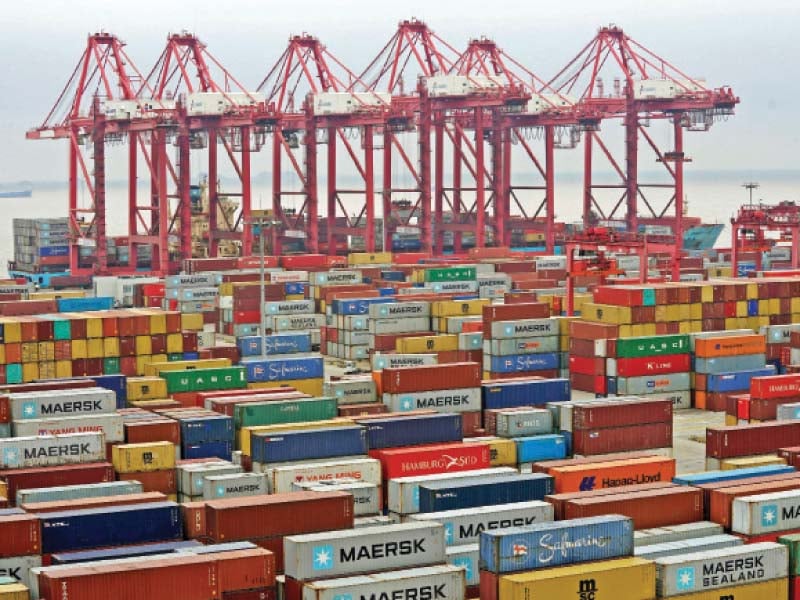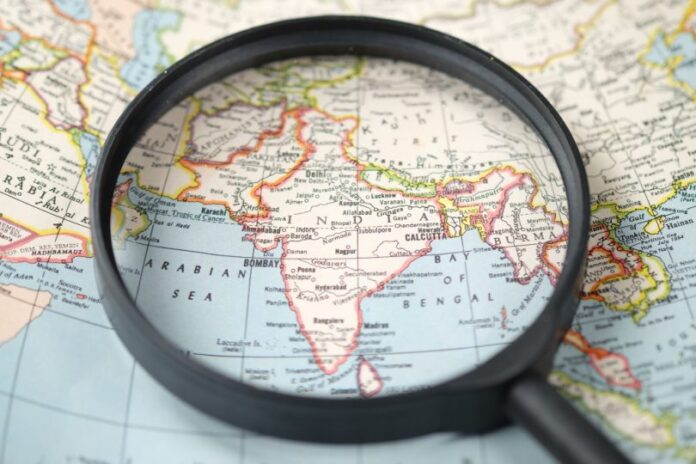Introduction
Safety and security is one of the major needs of human beings after their Physiological needs.2 Accordingly man has tried different forms of setups to ensure the safety and security of oneself and his clans/ tribes. Ever since the concept of nation states has matured, one of the prime responsibilities of the state is to provide safety and security to its citizens. At the state level, it is generally considered that the armed forces can provide security from external threats whereas law enforcement agencies can tackle the inner threats. Security from external and internal threats has long been thought the enabler for stability, continued progress and economic activity. However, the rapid transformation of the globe in the 21st century has changed the literal meanings of friends and foes. In this transformed world, the same country can be a threat militarily, but can be the largest economic partner concurrently. China and India as well as China and USA are examples of this fact. In this scenario, no single country alone can ensure its own safety and security to pursue long term strategic objectives. Hence the concept of multilateral security cooperation is gaining its primacy on the world stage. North Atlantic Treaty Organization (NATO), International Security Assistance Force (ISAF), European Union Naval Force (EU NAVFOR) are all examples of multilateral security arrangements.
Defining Security
Security is a complex subject and various efforts have been made to define security. One such definition is given by Muhammad Ayoob, scholar of Security Studies, ‘Security-Insecurity is defined in relation to vulnerabilities – both internal and external that threaten or have the potential to bring down or weaken state structures, both territorial and institutional, and governing regimes’.3
The concept of security has changed. It is no longer simply about territory rather issues like water availability, environment, trade protection, law and order, regional stability, and the effects of climate change are key collective-security issues for any region.4
Moreover, as all states become increasingly interconnected and dependent on relations with other states for export markets, investment capital and technological innovation. Hence they become more vulnerable to any disruption of international supply chains. Given the changing nature of security threats, cooperation rather than confrontation appears to be the more realistic approach.
The Concept of Multilateral Security Cooperation
The cooperative-security mechanism is constructed on a web of both bilateral and multilateral agreements in such a way that all parties gain from the arrangement, and all would be deprived if any member fails to meet its commitments. A major advantage of a multilateral agreement, compared with a bilateral agreement, is that all parties have a stake in the commitments that have been made, so if one party fails to honour its commitments, all other have cause to pressure it to comply.5
The Importance of the Indian Ocean Region
The Indian Ocean is now the world’s most important route for the movement of long-haul cargo. More than 80 percent of the world’s seaborne trade in oil passes through the Indian Ocean’s choke points; the straits of Hormuz, Malacca, and Bab el Mandeb. In addition to energy, vast quantities of bulk commodities and manufactured goods are moved by sea as part of the increasing intra- and extra regional trade. The integrity of the Indian Ocean sea lines of communication (SLOCs) is vital to global and regional economic security. In the complicated international shipping and trading context, maintaining the flow of trade is very much in the collective interest of the regional and extra regional nations; to ensure it, cooperative maritime security efforts are required.6
The Indian Ocean Region (IOR) contains a large proportion of the world’s fragile states. Parts of the IOR have been labelled the “arc of crisis”; the term “arc of instability” has also been used. Conflicts in the Middle East; political instability and conflict in Somalia, Yemen, Sudan, and Eritrea; social unrest in parts of India; simmering ethnic tensions after the recently concluded civil war in Sri Lanka—all these add fuel to the perception of a region riddled with political instability, actual or potential conflict, and uncertain security.7
Multilateral Security Cooperation in Indian Ocean
United States, Britain, and other Western powers remain engaged in the Middle East in support of global energy security and in addressing the sources of Islamist extremism. It can be argued that the involvement of external states helps to stabilize regional security; in many cases such involvement is essential to make up for shortfalls in the capabilities of regional states.
Some states believe that the responsibility for IOR maritime security should rest primarily with the regional states. However, most of them lack the capacity, whereas external powers have both the capacity and interests to protect; therefore they need to be constructively engaged for safety and stability in the area. For reasons of identity, security and long-term stability, and to take account of regional peculiarities, a tailor made version of regional cooperation was required. Based on this concept, Commander US Navy Central Command at Bahrain has been assigned the duties of Commander Coalition Maritime Forces (CMF). CMF include Coalition Task Force (CTF)-150, CTF-151, CTF-152 and CTF-158. CTF-150 focuses on counter terrorism efforts in North Arabian Sea, Gulf of Aden and Red Sea whereas CTF-151 concerns counter piracy efforts in Gulf of Aden and Somali Basin. CTF-152 deals with defence of oil platform in Central and Southern Arabian Gulf whereas CTF-158 focuses on defence of oil platforms in North Arabian Gulf. Although most of the regional countries are also part of these coalitions, some countries have not joined them due to contentious issues with US and other participating nations.

Pakistan’s Participation in Multilateral Security Initiatives
More than 95 percent of Pakistan’s trade is seaborne and major requirement of petroleum imports comes from the Gulf. Continuous flow of energy resources through the Strait of Hormuz is essential for the sustenance of our economy and wellbeing. Pakistan’s Exclusive Economic Zone (EEZ) is 240, 000 Sq Km, with the continental shelf extending a further 50, 000 Sq. Km. The area is rich in fishery, possibly hydrocarbons and seabed resources and Pakistan aspires to exploit the EEZ for the socio-economic development of the populace. It is therefore, in Pakistan’s interest to see that the environment at sea is secure and stable to pursue legitimate interests unimpeded.
At international level, enhancing maritime security in the region through participation in the efforts against terrorism and contributing towards stability and peace in the area, especially of SLOCs in the North Arabian Sea, are the focus of its continuous attention. Cognisant of its international obligations the Pakistan Navy (PN) joined the US led multi-national Coalition Task Force-150, under the ambit of Coalition Maritime Campaign Plan (CMCP). The mission of this task force is to work with regional navies through theatre security cooperation for countering extremism, terrorism and illegal activities at sea, in order to maintain maritime security and stability in area of responsibility. Pakistan’s participation in CMCP has completed a decade. So far more than 45 PN ships have participated in coalition efforts. In addition, PN has also commanded TF-150 five times.8
PN’s credence got a further lift when a new anti piracy Combined Task Force (151) was constituted in 2009 to fight piracy off the coast of Somalia duly mandated under the UNSC Resolutions. The steady deployment in long haul maritime operations has lead to the increase in reach and poise of the Pakistan Navy. Today PN makes its presence felt in large parts of the western Indian Ocean and beyond, including Horn of Africa, Red Sea, and Gulf of Aden over and above the north Arabian Sea.9
For its part, the Pakistan Navy has played a major role in pursuance of the country’s foreign policy and diplomacy. The enduring participation in multinational coalition operations aside, the institution of International Maritime Conferences fastened to Aman10 series of exercises every two years has enhanced both the national image as well as that of the Pakistan Navy in the region and beyond. The holding of these events not only provides a counter balance to other regional alliances but expands the contemporary concept of “collective security” in a region that constitutes a vital link in the international commerce and security architecture.
Conclusion
The contemporary era is characterized by interdependence and the need to work collectively for peace and stability. The Indian Ocean region is all set to play a crucial role in the 21st century and is likely to remain a hotbed of traditional and non traditional threats as well as other security challenges. Pakistan enjoys a unique position in the region. In line with national policies, the Pakistan Navy has an important role to play in ensuring regional maritime security and stability. The way ahead to address various challenges to regional maritime security is the formulation of a Collaborative Maritime Security Apparatus. However, a pre-requisite to make any pragmatic headway in this regard will be to resolve contentious issues and disagreements between the regional states through dialogue and political process. Such an approach could facilitate confidence building and trust between the regional countries, leading to the furtherance of cooperation in combating maritime crime and enhanced Maritime Domain Awareness (MDA).
Bibliography
Cordner, Lee. 2011, Progressing Maritime Security Cooperation in the Indian Ocean. Naval War College Review, Autumn Vol. 64, No. 4.
Collins, Alan. 2007, Contemporary Security Studies, Oxford University Press, London.
Hough, Peter. 2008, Understanding Global Security, Second Edition, Routledge, New York.
Khan, Muhammad Azam and Ayesha Aijaz, 2012, The Indian Ocean, United States and Pakistan Navy IPRI Journal xii, no. 2.
Maslow, A. H. 1943, A Theory of Human Motivation, Originally Published in Psychological Review, URL:http://psychclassics.yorku.ca/Maslow/motivation.htm
Ness, Peter Van. 2008, Designing a Mechanism for Multilateral Security Cooperation in Northeast Asia Australian National University, Canberra, Australia.
Nye, Joseph S. 2004, Soft Power, Public Affairs, New York.
Siddique, KHB. 2011, ‘Pakistan Navy meeting Indian Ocean security challenges’.
URL: http://maritimesecurity.asia/2011/11/
End Notes
2Maslow, A. H. 1943, A Theory of Human Motivation, Originally Published in Psychological Review, 50, pp 370-396. [cited 25 Nov 12] URL:http://psychclassics.yorku.ca/Maslow/motivation.htm
3Ayoob, Muhammad. 1995, The Third World Security Predicament, Cambridge University Press, London, p.9.
4Cordner, Lee. 2011, Progressing Maritime Security Cooperation in the Indian Ocean. Naval War College Review, Autumn, Vol. 64, No. 4, p69.
5Ness, Peter Van. 2008, Designing a Mechanism for Multilateral Security Cooperation in Northeast Asia Australian National University, Canberra, Australia, p14.
6Cordner, Lee. 2011, Progressing Maritime Security Cooperation in the Indian Ocean. Naval War College Review, Autumn Vol. 64, No. 4, p73.
7Ibid pp75-78.
8Siddique, KHB. 2011, [cited 24 Nov 12], ‘Pakistan Navy meeting Indian Ocean security challenges’. URL: http://maritimesecurity.asia/2011/11/
9Khan, Muhammad Azam and Ayesha Aijaz, 2012, The Indian Ocean, United States and Pakistan Navy IPRI Journal xii, no. 2: p50
10AMAN is an Urdu word meaning “PEACE”. First Exercise of AMAN series was held in March 2007 which was a big success. Fourth exercise of the series, AMAN-13 is scheduled to be conducted in North Arabian Sea from 4-8 March 2013. [cited 24 Nov 12], URL: http://www.defence.pk/forums/pakistan-navy/205519-fourth-aman-exercise-held-march.html




